Please note: I’m about 40 hours into the game. Square Enix provided us with a review code a few days after the game’s launch, and if the original’s 80-ish hour runtime is any indication, I’m in for quite the lengthy adventure. Read on for our Octopath Traveler II review!
Possible spoilers ahead.
When the original Octopath Traveler was released back in 2018 on the Nintendo Switch, it felt like it was the second coming of retro-style Japanese RPGs . Sporting Square Enix’s now signature “HD-2D” graphics style, the game blended the nostalgia and feel of powerhouse JRPGs of yore like Final Fantasy VI and Chrono Trigger with more modern features like full voice acting and having the option to speed up the battle animations.
While the original Octopath Traveler pays faithful homage to SNES-era JRPGS, Octopath Traveler II feels a bit more like an expansion than a fully-fledged sequel. Sure, there are aspects of the game that improve upon its predecessor, such as a slightly more cohesive story and more battle mechanics (more on these later), but the visuals, sound design, and story structure feel like a copy and paste. Even the main characters’ 8 starting classes are the same as the original. Don’t get me wrong, these things are what make the original game one of the greats, but I was expecting a bit more innovation than improvement. Good improvements, but only improvements nonetheless.

Finding your Path
The game get its “Octopath” namesake from the 8 playable party members you can recruit throughout your journey. When you start the game, you pick one and cannot swap them out of your party until you finish their story all the way through. When you finish the initial Chapter 1 of your chosen character’s story, the game really toes the line between semi-linear and open world. When you open the world map from the main menu you can see the where other 7 characters are, and this is where the open world aspect comes into play. You can travel to other towns and areas on foot in any order you choose, meaning you can get any party member at any time. Be warned though, as there are difficulty indicators for all areas. Before heading to the next screen, the game tells you “Danger Level 31” and so on, and they really mean it. I had just left the first town with my level 4 starting character, the thief Throné, when I happened upon a Danger Level 16 area and got sufficiently destroyed. Even seasoned JRPG veterans should be weary of higher level areas.
While there are dungeons and caves in Octopath Traveler II, they aren’t as explorative as you’d expect from a JRPG. Instead, traversal, exploration, and grinding are done on paths found between towns. Additionally, most main story bosses are also found within towns, while a hefty chunk of the optional bosses are found in these dungeons guarding rare items and gear. A cool feature found in this game that wasn’t in the original is sailing. As you progress the story, Partitio the merchant has a sidequest where you can buy your own ship (don’t worry, you can still cross the ocean through ports for a small fee if you can’t afford the 100,000 Leaves price). While you can manually dock your ship to avoid these costs, the main thing you’ll do while sailing is explore the ocean and islands otherwise inaccessible on foot. Don’t worry about leaving one town for another, as the game offers a simple fast travel option to and from towns you’ve already visited.
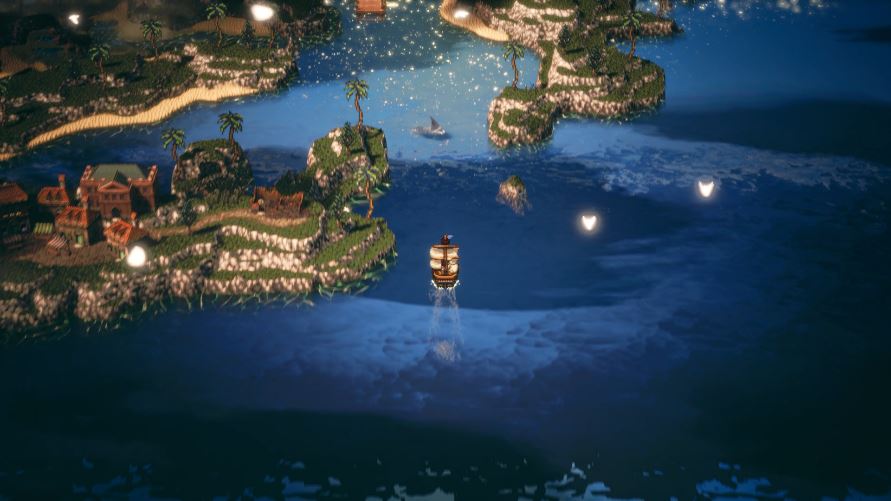
The Differences are Night and Day
One of the biggest differences between this game and the original is the inclusion of a dynamic Day/ Night cycle. Players can switch between day and night at will, so no headache of waiting real-time hours for the cycle to pass. This mechanic adds a lot more depth to Octopath Traveler II; NPCs are in different locations based on the time of day, certain enemies only appear at night, and characters like Throné and Temenos the cleric give your party buffs while battling at night.
The narrative use of the Day/ Night cycle is your characters’ Path Actions. In the original game, each character had their own unique ability to be used outside of battle on townspeople or other NPCs, such as Steal or Provoke. These mechanics return, but each character also gets another Path Action at night. For example, during the day Ochette the hunter can Provoke people into battle, but can Befriend them at night to bring them with her wherever she goes. Some of the Path Actions, like Inquire and Scrutinize, do essentially the same things (in this case get information out of townspeople), but you may not always have these characters in your party at the same time.
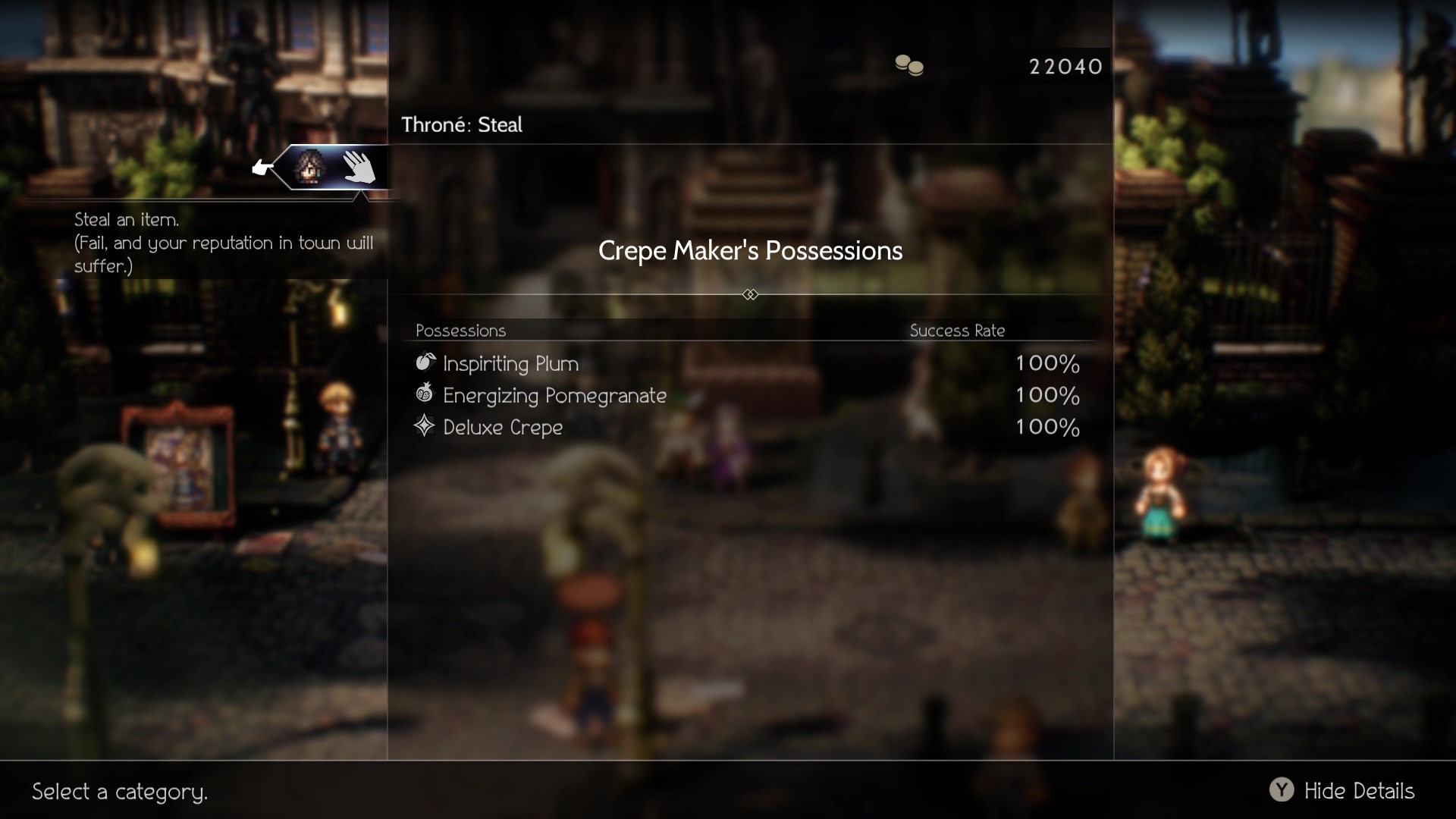
Traveling the Octo… paths
The 8 characters’ stories are all unique and intriguing on their own. They range from Hikari the warrior, the rightful king to a usurped throne gathering allies to take back his homeland, to Osvald the scholar, a man on a mission to clear his name after spending years in an unforgiving frozen prison after being convicted of the murder of his wife and daughter, and even Agnea the dancer, who just wants to be the biggest star in the land.
Similar to the original, Octopath Traveler II‘s self-contained stories are incredibly well-written and are heartwarming or gut-wrenching, depending on whichever chapter you’re doing. However, unlike the original, Octopath II has new Crossed Paths sidequests where characters will team up with one another to go on their own adventure. This is an extremely welcome addition, and one I hope continues if the series thrives. The lack of significant character interaction in the first game is by far its greatest weakness. Additionally, Octopath II utilizes Travel Banter among characters as well, which are quick asides that offer more backstory, character bonding, and exposition, akin to the mechanic seen in Square Enix’s own Bravely RPG series.
Keep in mind there is a final, culminating chapter available to players who have finished each main chapter and each Crossed Path chapter.
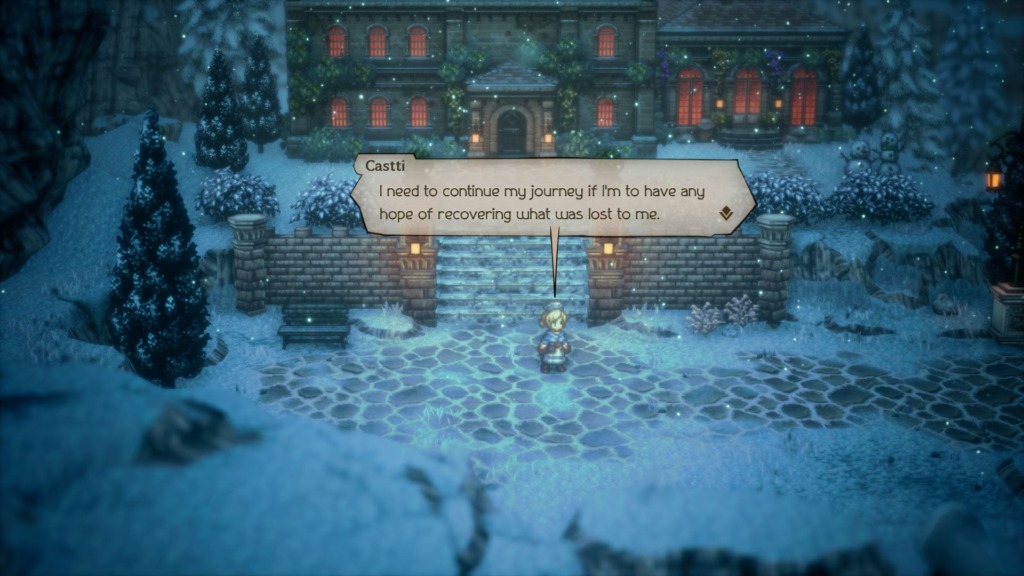
Battles and Boosts and Breaks, Oh My!
Combat is where Octopath Traveler II really shines, although hardly unchanged from the original. It has the makings you’d expect of a turn-based JRPG, like leveling your characters and equipping the strongest gear. It doesn’t entirely innovate in its combat mechanics, but it definitely perfects them. Like the original, each character can Boost to give themselves an extra move or power up their attacks or buffs, and each enemy will Break if hit with the appropriate weapon or element enough times. Breaking an enemy is done by lowering their Shield Points to zero using this method.
A new aspect of combat this go around is the Latent Power mechanic, a sort of “Limit Break” that charges if the user takes damage or Breaks an enemy. Latent Powers are used to give the player even more of an advantage in battle, ranging from maxing out BP to taking another turn. This is a welcome addition and adds more depth to the already satisfying combat loop. By mixing and matching certain characters and jobs, you’ll become a force to reckon with to even the toughest enemies.
Speaking of jobs, they make their return as well. Each starting character has their own default job (Hikari the warrior, Temenos the cleric and so on), and each of these classes are unlockable via Licenses to be used by other characters as secondary jobs. This allows you to learn their active and passive abilities, setting the stage for significant team combinations and build variety. In typical JRPG fashion, mastering these classes requires a bit of grinding, but Octopath Traveler II makes it feel rewarding and satisfying rather than a chore.
Throughout my playthrough, I stuck with a main party of three (Throné, Osvald, and Hikari) and swapped the fourth member out for whichever chapter I was doing. If I was doing any of my main party’s chapters, I’d cycle between Temenos and Castti for their healing abilities. Your mileage will vary, and there aren’t any characters who are objectively better than others. The game really encourages experimenting and trying out different secondary classes, so feel free to go crazy.
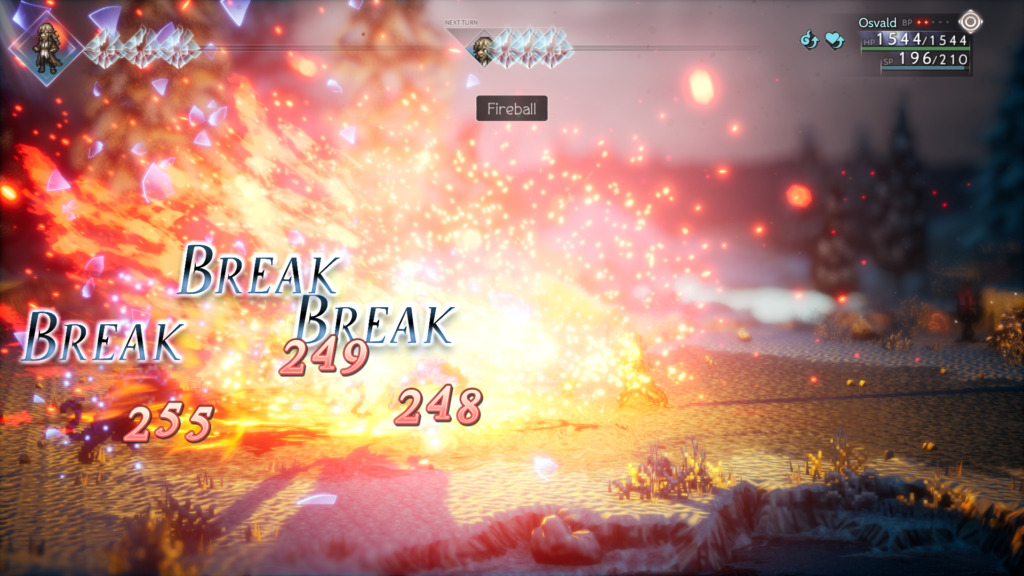
Music to my Ears
The original Octopath Traveler was made in this stunning, colorful art style Square Enix has since coined as “HD-2D” and used in a handful of other games. Octopath II really takes this style and runs with it. I’m playing on Nintendo Switch on a 55″ 4K TV when docked and have had no major framerate or other visual issues. When playing in handheld on my launch-era Switch, the visuals pop just as well as when docked. The game’s colors and weather effects are breathtaking, and I got lost countless times exploring the overworld, taking in the ambient soundtrack.
The sound design and full voice acting is one of the game’s flawless aspects. Each area has an orchestral piece that really fits their respective themes and moods. Every main character and story-essential NPC has incredible voice acting, and not once did I think the voices felt poorly done or out of place.
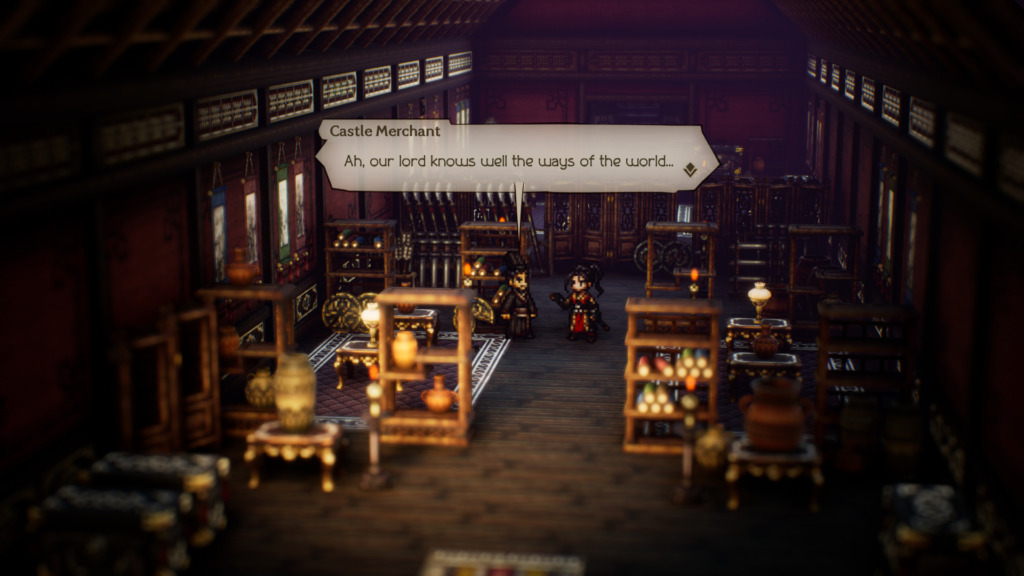
Verdict
Octopath Traveler II is another modern pillar of the Japanese RPG genre that safely yet slightly disappointingly rehashes what made the original great, while adding its own spice to the mix. Its emotional storytelling, satisfying combat, gorgeous visuals, and impeccable sound design make this one to move to the front of your back log. I just wish it had taken more risks to try something new. I recommend any fans of the genre who are on the fence about this game (and even the original) give this a try.
Reviewed on Nintendo Switch. Images and review code provided by Square Enix.

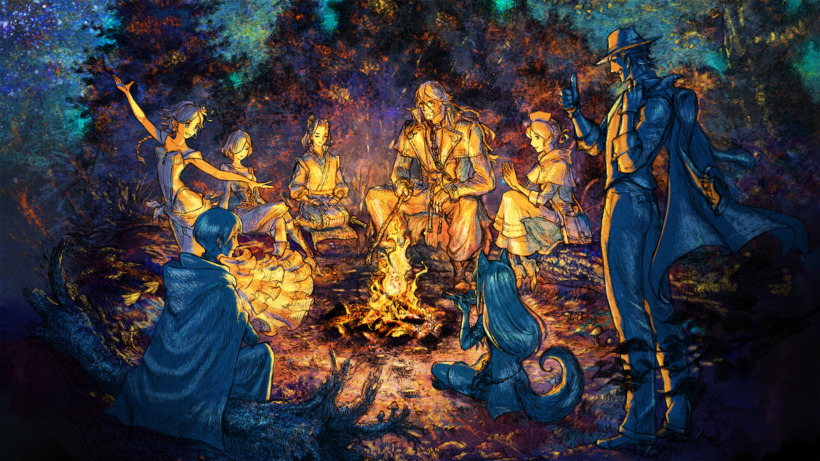

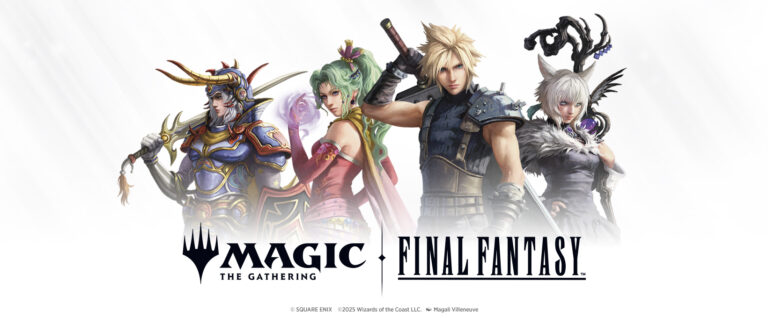
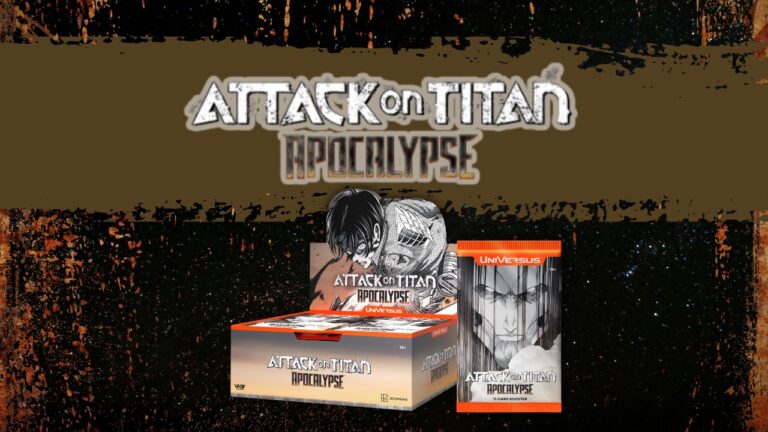
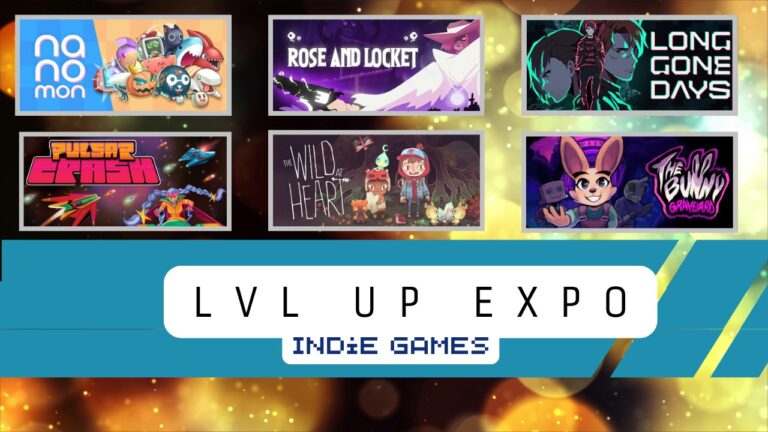
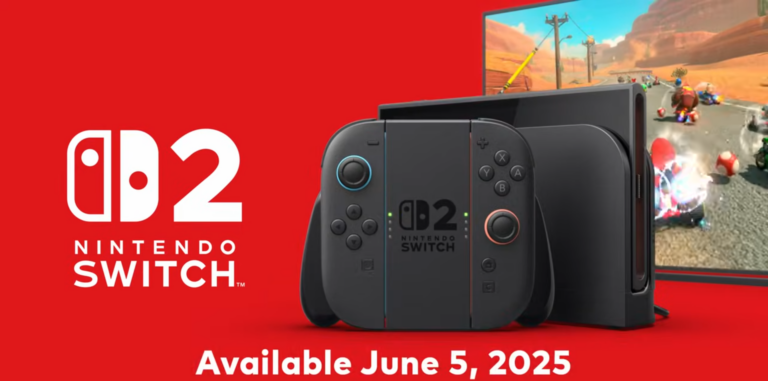
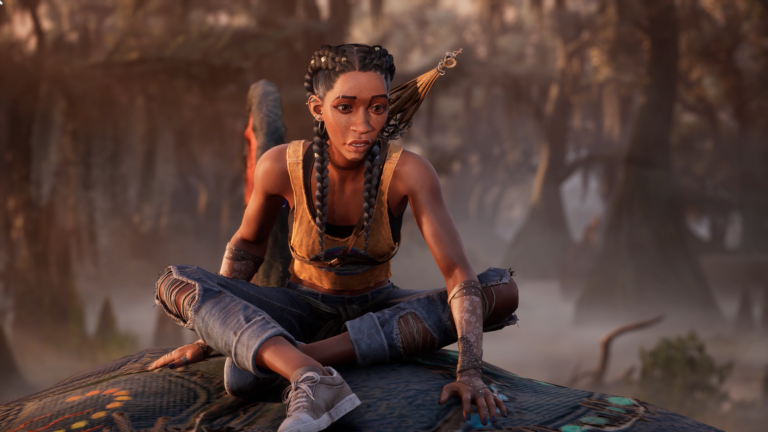

I’m not as far in as this review but so far I’m in love with the game. I think the mechanics and “improvements” are a necessary polishing and the main draw is the JRPG package and deep storytelling in the forefront. It’s a well polished game.
Everyone says all the stories are very good but so far as I’ve gone some of them are pretty bland or vain such as the dancer and merchant, while others are very intense, emotional or intriguing. My favorite so far has been Hikari’s story but Ochette’s is an interesting 2nd.
Let’s be honest though, the graphics are lousy. The shadows are very good, and the ambient effects are outstanding but even at 4k base textures and maxed settings on PC, overall the visuals are quite underwhelming. Art can only make up for so much. Imagine if we had all this game with the visuals of Final Fantasy 7 Remake – or better. I get that it saves a vast amount of time and money allowing the game to be made more easily but the visuals are a weakness, not a strength.
The key to a game like this is immersion. The music, and moreso the voice overs are a home run. The storytelling is gripping and great, unless you find some stories boring. The combat is fun and compelling. The only downside are the dumbed down graphics. Still this is my favorite new release and the most fun I’ve had in a new game in a few years.